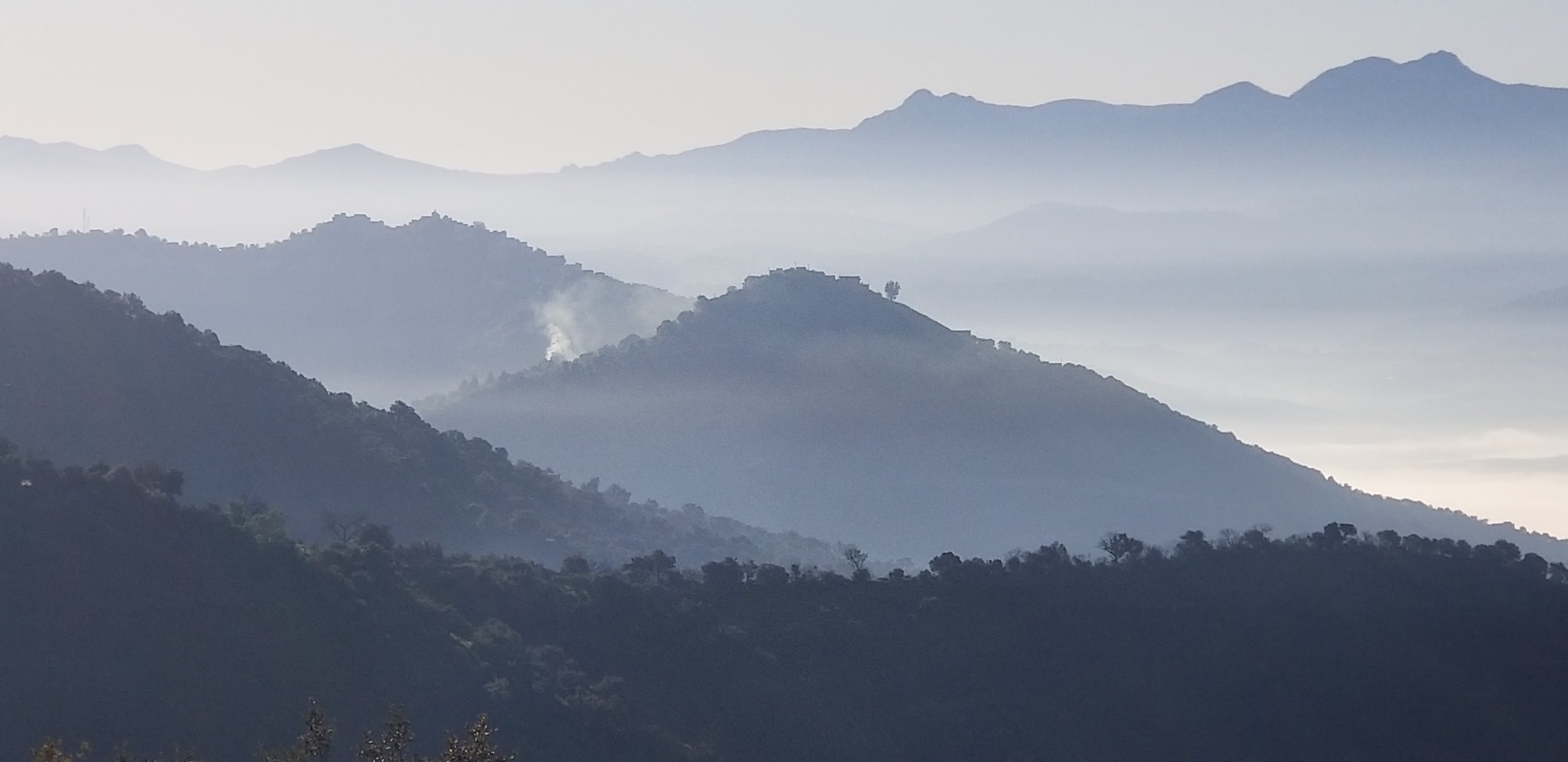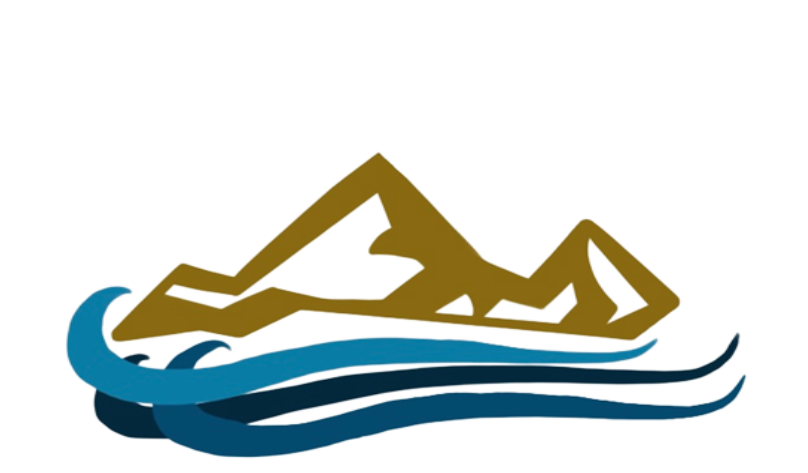
Water Prospecting Methods
Doria Kutrubes, April 2021
Q&A Session:
Surveying Water Quality with Geophysical Equipment
Q: Can any of the geophysical prospection techniques be used to evaluate water quality and any potential health risks? This can be groundwater, salted water, or wastewater.
A: The contaminated water would have a higher total content of dissolved solids, which would diffuse the signal and yield higher conductivity. When there is a concern of water contamination, we would have to “ground truth.” That is, for a drinking water supply, ground truth means that a geotechnical boring is done, and water samples are taken for chemical and microbiological evaluation. Based on previous experience, you would need to know the local geology to locate the desired formation and the unconsolidated material above that formation. In UN refugee camps in Kenya, to avoid extracting high fluoride contaminated water (10 times higher than recommended levels by US EPA), colleagues solved the problem by making the bedrock well shallower, so it wasn't in the fractures where the lava flows (i.e., groundwater rich in fluoride). In Cape Verdi, the municipal water supply was in the fluoride rich water and the kids’ teeth were brown. The high fluoride eventually leads to osteoporosis at an early age. To avoid such health problems, you would aim for the unconfined aquifer sitting above the bedrock and not in the bedrock itself. In short, having knowledge of the regional geology is extremely important.
Impact of Polarization on GPR Surveys
Q: What is the impact of polarization on GPR surveys for frequencies above one gigahertz?
A: For antenna arrays, and in terms of antenna types and their polarization (horizontal, vertical or circular), there are ways of polarizing different antennas to make them less susceptible to near surface metal. For instance, cross-polarization in reinforced concrete is good. If you want to see below the reinforced concrete, it will minimize the reflection from the rebar.
However, when talking about polarization in terms of molecular relaxation, you really can't change physics. It's a loss attributed to polar molecules, like methanol and especially water. This inherent loss affects the GPR survey. If you're outside, trying to locate a water line with a GPR to get two meters of penetration, you would use a 400-megahertz antenna that should work even if the soil is damp. But if you have road salt and the soil or the pavement is damp, you are not going to see anything. If you are using a 1.5-gigahertz or 2.6-gigahertz antenna for a pavement survey and you are looking for, say, thickness of bituminous asphalt or delamination of the asphalt between the concrete, then you cannot do it. The pavement has to be absolutely dry because the molecular relaxation is at ten gigahertz, and you absolutely cannot change physics.
Electrical Resistivity Tomography (ERT)
Q: What is a low-cost technique for doing a water survey?
A: What's available and the least expensive is the electrical resistivity meter. For example, if you have electrode spacings on the order of 100 meters, that will image deep, and usually from end to end of the array, you have a four electrode array, then your separation from end to end is 300 meters. In this case, you can achieve about 100 meters of penetration with electrical resistivity. So even that depth is not good enough for the Sahara. Something to investigate for the groundwater depth in the Algerian Sahara.
Impact of Dipole Mode on EM Terrain Conductivity
Q: Which Dipole mode is best for ERT surveys?
A: For the EM terrain conductivity meters, it is best to use vertical dipole mode because it images deeper. Basically, the contribution is at depth whereas the horizontal dipole mode is more susceptible. It gets most of its contribution for near surface and it tapers down. So, you actually need to image in the vertical dipole mode to image deeper down. You must image in the horizontal dipole mode to chase down a plume and to estimate the plume depth. We had a water purifying system that had residual salts, which was piled up, and we did a survey with EM-31 in both horizontal and vertical dipole modes, which can be achieved by rotating the boom. In both horizontal and vertical dipole modes, we repeated the survey with 10-meter, 20-meter and 40-meter separations. We had literally eight different samplings, and each of them were slightly different depending on whether you were in the horizontal or vertical mode. Thus, the plume was imaged both vertically and horizontally.
Effective Techniques for Groundwater Detections
Q: Describe VLF and seismo-electric techniques for groundwater detection.
A: Geonics Limited makes an EM16 VLF receiver (website) similar to the discontinued WADI (ABEM) VLF equipment and given that you are far away from interfering metallic objects, you can set up a transmitting loop that would have to be around a kilometer by a kilometer.
For instance, some soil might have a higher residual magnetic susceptibility than another soil. If you're trying to avoid high iron groundwater, you would want to have a magnetic survey to locate areas of low magnetic susceptibility.
VLF is a traditional technique that will be able to find fractures to about 50 meters below grade.
Water Prospecting in the Sahara Desert
Q: In the south of Algeria, in the Sahara, the depth of groundwater is about 500 meters. What's a suitable technique for water prospecting?
A: The suitable method for water prospecting is Seismo-Electric. The seismo-electric method is for both geothermal fractures for energy applications, and for very deep-water bearing bedrock fractures. The question that arises is where bedrock is. Answering that will determine where your water supply is going to be. The other question is what the surface material is like. Is it all sand? Then you could use a low frequency antenna in extremely dry soils or on glacial ice as these can go down 100 meters. For the Sahara, it's a question of what is there; are there dried salts? And if they are dried, are they perfectly dry? Because if there is any slight moisture, then it will cause a lot of attenuation; hence seismo-electric method would be useless. But for other methods, I would ask, where's the bedrock? It seems to me we're probably looking for an ancestral or buried valley where water could accumulate—basically, using seismo-electric to find water-bearing fractures in the bedrock. We know that conditions were different a couple thousand years or four thousand years ago.
In the South of Algeria, there is a significant groundwater reserve. For example, the region around Tamanrasset is linked by two large aquifers with depth ranging from 250 to 500 meters. So, there is a huge challenge on how to extract the groundwater located at these depths. Perched vegetation is found in the Sahara oasis, such as Ghardaia and Biskra. In this region, you find two kinds of water tables. One is not higher, not deeper at around 15 meters, and the other is very, very deep, at around 250-meters to 500-meters in depth.
Challenges and Solutions in Sustainable Water Management
Q: What are the challenges of water management and the need for better strategies?
A: The solutions must not only be technical but also political in that there must be participation of the local government and municipalities and enforcement of better sustainable strategies for the agriculture and drinkable water. I am aware of a source of funding that Ugandan colleagues obtained for a sustainability grant from the United Arab Emirates; something to keep in mind for potential funding on water management projects.
In the north of Algeria, water desalination is used in potable water supply. However, in the south of Algeria, groundwater is mainly used because there is a huge quantity and it is essentially the only water resource. So different sustainable management solutions need to be devised for different geographical regions.
Limitations of Traditional Geophysical Techniques
Q: How to best move from limited traditional methods to better-suited geophysical survey methods.
A: Most of the geophysical techniques discussed in this webinar do not directly find groundwater but are used to find the bedrock formations that contain the water sources.
In Algeria, water survey for the most part still uses the traditional techniques. The piezometric methods are still utilized for measuring water tables. Groundwater is heavily key in developments and heavily used by agriculture in Chlef province, in the north-west area of Algeria. 88% of land is irrigated using groundwater so this resource is very challenging to manage sustainably. It needs to be better managed for extracting groundwater for irrigation to avoid anarchy. The ADE (or Ministry of Hydrology) and water authorities in Algeria oversee everything related to water. To measure the water table drawdown and the drop of piezometric levels in wells, readings of high and low waters are done twice a year (April-May and September-October). These level drops have been significant and have been worse in recent years.
Also, increased salinity due to water scarcity pollution is attributed to current agricultural practices. For instance, nitrogen fertilizer is commonly used in potato crops. Researchers have long advised local farmers to practice water conservation by using drip watering for irrigation, installing meters to better manage water usage and avoid waste. This advice has fallen on deaf ears; for farmers, the more water they use, the better their crops will be.
Note that the above governmental agencies, along with Agence des Bassins Hydrographiques (ABH), or the hydraulic research center, would have the geological map of the Sahara and other regions of Algeria that will be useful for water exploration studies.
Water Survey References
Q: What are your recommended references on water prospecting for further university studies?
A: I would start with the Society of Exploration Geophysicists (SEG) online library (website). There's also an international group, Near Surface Geophysical Society (website), which is part of SEG with paid reference material. I've addressed the issue of fees with SEG and there is a possibility to have free access to all the students for certain digital content. The SEG Wiki's main mission is to supply scientific materials to the geoscience community and the public through online books, geophysical tutorials, geoscience articles, and biographies of key geoscientists. Refer to these pages for introductory material:
ABCs of Seismic Exploration and Processing (wikipages)
Problems and Solutions in Exploration Seismology (wikipages)
Seismic Data Analysis (wikipages)
Open Online Geophysical Data (wikipages)
Online geoscience publications include:
Near Surface Geophysics journal (website).
The US Geological Survey library (website) has online scientific reports.
Some related reference textbooks and notes on geophysics include:
G. V. Keller, F. C. Frischknecht, Electrical Methods in Geophysical Prospecting, Pergamon Pr, 1981
Milton B. Dobrin, Carl H. Savit, Introduction to Geophysical Prospecting, McGraw-Hill, 1988
W. M. Telford, L. P. Geldart, R.E. Sheriff, Applied Geophysics, Cambridge University Press, 1990
J. M. Reynolds, An Introduction to Applied and Environmental Geophysics, Wiley, 1997
D. J. Daniels, Ground Penetrating Radar, Institution of Engineering and Technology, 2004
H. M. Jol, Ground Penetrating Radar: Theory and Applications, Elsevier Science, 2008
A.P. Annan, Ground Penetrating Radar: Principles, Procedures & Applications, Sensors & Software Inc., 2003
M.H. Loke, 2-D and 3-D electrical imaging surveys: Tutorial, ResearchGate, 2021
O. Yilmaz, S. M. Doherty, Seismic Data Processing, Society of Exploration Geophysicists, 1987
D. L. Kutrubes, Dielectric Permittivity Measurements of Soils Paturated with Hazardous Fluids, Colorado School of Mines, 1986
R. A. Freeze, J. A. Cherry, Groundwater, Hydrogeologists Without Borders, 1979
